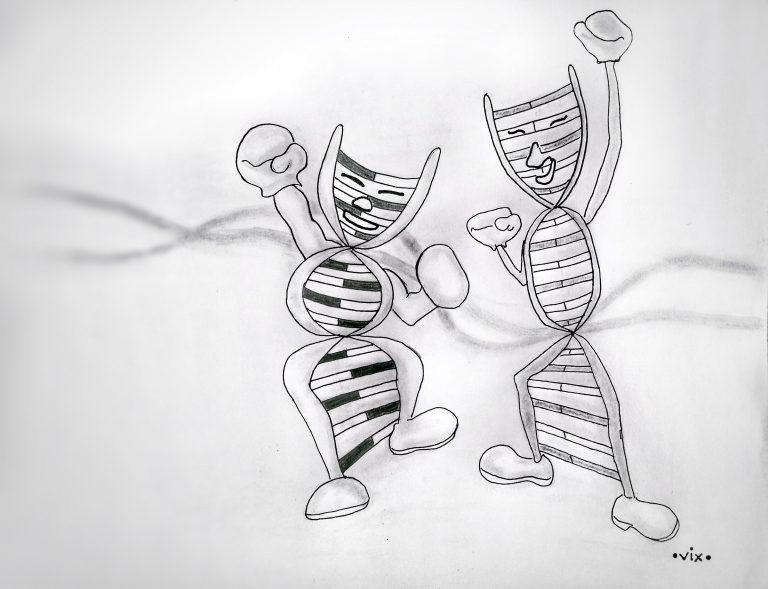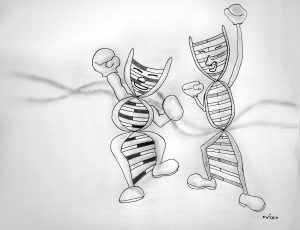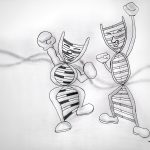
Selfish gene has a vital impact on the survival of the species as a whole.
Table of Contents
What is a selfish gene? A selfish gene is not a gene that makes an individual selfish. In fact, it may even be involved in the demonstration of a selfless act, a mark of altruism. Selfish gene elements (or selfish DNA) are nucleotide sequences that make copies of itself within the genome. They are regarded as unhelpful as they are of no use since they do not make a protein product. Sometimes, they may even cause harm. However, selfish genes have a vital impact on the survival of the species as a whole.
Selfish gene as a concept in evolution
Richard Dawkin coined the term selfish gene. He also proposed a gene-centric view of evolution in his book “The Selfish Gene”, which he wrote and published in 1976. An excerpt of his book states: “Genes are competing directly with their alleles for survival, since their alleles in the gene pool are rivals for their slot on the chromosomes of future generations. Any gene that behaves in such a way as to increase its own survival chances in the gene pool at the expense of its alleles will, by definition, tautologously, tend to survive. The gene is the basic unit of selfishness.” 1
Selfish gene, defined

The genes are the immortals…. They are the replicators and we are the survival machines. When we have served our purpose we are cast aside. But genes are denizens of geological time: genes are forever. – Robert Dawkin1
Accordingly, a selfish gene would compete for its seat (loci) on the organism’s genome. Those that efficiently make copies of themselves would likely increase in number and survive in the gene pool whereas those that are less effective in the competition would tend to decrease in number.
Altruism
In spite of its reputation as egoistic, a selfish gene favours altruism, especially, if the act would help its replicas in other members of its species survive. Many animals – from mere ants to the more intricate humans – display altruism, which refers to a set of acts depicting a seemingly selfless behavior for the benefit or well-being of others. Hence, even if the altruistic act would eventually harm an individual, it would still prove beneficial to a selfish gene since more of its replicas in other members could wind up persisting.
Elements
Selfish gene elements (sometimes referred to as selfish DNA) are nucleotide sequences that make copies of itself within the genome. They do not necessarily add up to the reproductive success of or confer significant advantage to the organism. Sometimes, they may even cause harm.
Recently, researchers have sequenced for the first time two selfish genes from the fungus Neurospora intermedia. A fungal spore that carries the selfish gene known as the “spore killer” would kill the sibling spores lacking the gene. 2
Another example of a selfish gene element is that found by the UCLA researchers in a strain of the roundworm Caenorhabditis elegans. They found a pair of selfish genes, one that encodes for a poison and the other that encodes for its antidote. The offspring that does not inherit the gene for the antidote dies while still an embryo because it fails to protect itself from the poison (toxin) produced by the mother. 3
Implications
These studies on selfish genes implicate that there might be many more of them and are probably just hiding in plain sight. Discovering them could one day lead to important uses. For instance, selfish genes could be used as genetic control that would deter the development of pesky parasites at the molecular level.
— written by Maria Victoria Gonzaga
References
1 Dawkins, R. (2016). The Selfish Gene: 40th Anniversary edition (4th ed). Oxford University Press. ISBN 0191093076.
2 Uppsala University. (2018, October 15). Unravelling the genetics of fungal fratricide. ScienceDaily. Retrieved from www.sciencedaily.com/releases/2018/10/181015113524.htm
3 University of California – Los Angeles Health Sciences. (2017, May 11). Study of worms reveals ‘selfish genes’ that encode a toxin, and its antidote: Discovery could suggest new ways to stop the spread of disease. ScienceDaily. Retrieved from www.sciencedaily.com/releases/2017/05/170511141937.htm
